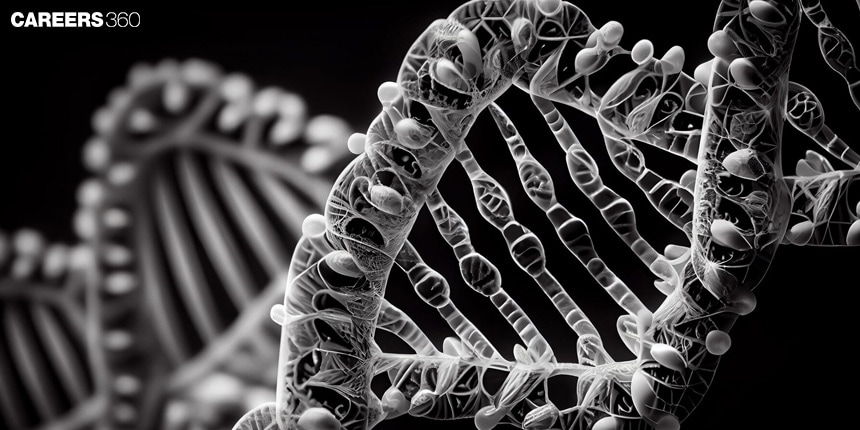Modern Synthetic Theory Evolution
The Modern Synthetic Theory of Evolution integrates Darwin's natural selection with genetics, combining ideas from multiple scientific fields. It explains evolution as a process driven by genetic variations, mutations, gene flow, and natural selection. In this article, modern synthetic theory, factors of the modern synthetic theory of evolution, key elements of the modern synthetic theory, and evidence for the modern synthetic theory are discussed. Modern Synthetic Theory is a topic of the chapter Evolution in Biology.
- What is the Modern Synthetic Theory?
- Factors of Modern Synthetic Theory of Evolution
- Key Elements of Modern Synthetic Theory
- Evidence for Modern Synthetic Theory

What is the Modern Synthetic Theory?
Modern Synthetic Theory integrates principles of natural selection and Mendelian genetics as a single theory of evolution. This theory incorporates Darwin's model of the evolution of species through natural selection with our present understanding of genetic inheritance to present a comprehensive framework for studying biological evolution.
The theory is critical in biology due to explanations for what diversified life on Earth is, showing how modifications in genetics and environmental conditions fuel evolutionary change. Having integrated knowledge of different biological sciences, the Modern Synthesis has changed our view of the evolutionary processes of change and adaptation of species over time. The modern synthesis began with the synthetic theory of evolution in the early twentieth century. It brought together some of Darwin's and Mendel's findings, representing the biochemical and evolutionary points of view. Key contributions by scientists like Ronald Fisher, J.B.S. Haldane, and Sewall Wright provided mathematical models of genetic variation and selection pressures within populations.
Factors of Modern Synthetic Theory of Evolution
Several factors lead up to the Modern Synthetic Theory of Evolution, all of which are equally important in the shaping of populations over time.
Genetic Recombination
Reshuffling of alleles during meiosis
New combinations of genes
Increased genetic variation
Mutation
Changes in the DNA sequence
Beneficial, neutral, or harmful
Source of new genetic variation
Genetic Drift And Gene Flow
Genetic drift: Random change in allele frequencies
Bottleneck and founder effects
Gene flow: Gene migration across populations
Introduction of new genes, thus decreasing population differences
Natural Selection
Variation in survival and reproduction
Select for beneficial traits
Adapts in time
Isolation
Geographic, reproductive or behavioural barriers
Prevents gene flow between populations
This can lead to speciation
Also Read-
- MCQ Practice on Modern Synthetic Theory
- Evolution
- Miller Urey Experiment
- Difference between Homologous and Analogous Structures
Key Elements of Modern Synthetic Theory
Key elements of the Modern Synthetic Theory describe how evolution works through some mechanisms and processes.
Genetic Variation
Sources of genetic variation include mutation, recombination, and gene flow.
Necessary for evolution, as it provides the raw material for natural selection.
Natural Selection
The process by which individuals who have positive traits are more likely to survive and reproduce.
Examples: Peppered moths and antibiotic resistance in bacteria
Genetic Drift
Random changes in the frequency of different alleles are significant in small populations.
Examples: bottleneck effect and founder effect
Gene Flow
Movement of genes from one population to another by migration.
Reduces genetic variation among populations and increases genetic variation.
Speciation
Formation of new species.
Allopatric speciation, physical isolation due to geographic change.
Sympatric speciation, no physical barriers to organism distribution.
Evidence for Modern Synthetic Theory
The Modern Synthetic theory has significant amounts of evidence to back up its findings, showing the reason behind evolutionary theory.
Fossil Record
Transitional fossils – species in intermediate form.
Temporal patterns in evolutionary change.
Molecular Biology
Similarities and differences in DNA and proteins reflect genetic relationships.
Comparative genomics allows the establishment of evolutionary relationships.
Embryology
Developmental similarities of species reflect common ancestry.
Homologous structures in embryos indicate evolutionary relationships.
Biogeography
The geographic distribution of species reflects evolutionary history.
Adaptive radiation illustrates diversification from a common ancestor.
Also read-
| Embryo Development | Gene Flow |
| Darwin's Contribution: The Theory of Evolution | Genetic Drift |
| Genetic Mutation | Difference between Allopatric and Sympatric Speciation |
Recommended Video for Modern Synthetic Theory of Evolution
Frequently Asked Questions (FAQs)
This is the integration of natural selection and Mendelian genetics into the explanation of evolution. It brings together the major contributions of Darwin and Mendel.
Genetic variations are generated through mutation, recombination, and gene flow, which generate diversity within populations.
While natural selection favours only those traits advantageous for survival, genetic drift does random changes in allele frequencies.
There are fossils, molecular biology, embryology, and biogeography, all of which support evolutionary relationships and changes.
It affects medicine, agriculture, and conservation biology through the practical application of knowledge in evolutionary studies to real-life challenges.
Also Read
23 May'25 07:05 PM
03 Dec'24 10:56 AM
30 Nov'24 08:28 PM
27 Nov'24 08:01 PM
26 Nov'24 11:40 PM
21 Nov'24 05:41 PM
19 Nov'24 02:01 PM
19 Nov'24 11:02 AM
19 Nov'24 08:45 AM
18 Nov'24 10:54 PM